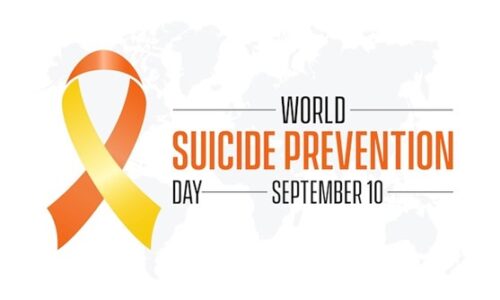Negligence in suicide prevention can have devastating consequences. The failure to provide adequate support and intervention to individuals at risk can result in tragic outcomes. It is crucial to recognize the importance of suicide prevention and intervention, and to understand the link between negligence and these preventable tragedies. It is time to break the silence, challenge the stigma, and take action to prevent suicide.
When individuals at risk of suicide do not receive the support and intervention they need, the consequences can be severe. Negligence in suicide prevention can result in loss of life and emotional trauma for the families and communities affected. This link between negligence and suicide prevention tragedies highlights the urgent need for increased awareness, education, and support.
Uncovering the Dark Side: How One Regulator’s Recklessness Led to Tragic Consequences
WorkSafe Victoria has filed charges against the Victorian Building Authority for breaking a section of the State Occupational Health and Safety Act 2004. This was in response to the death by suicide of one of their inspectors in May of 2022. The accusation is that the VBA acted recklessly and endangered another person at the workplace. The maximum fine for such an offence is 20,000 penalty units, which is over $3.6 million.
The charges also allege that the VBA failed to provide a safe and healthy workplace, as well as a system to reduce the risk of workplace-related stress and psychological injury, including anxiety and depression. This was at a time when the VBA had a poor workplace culture and unsafe practices. To address this, the organization has appointed Gregory Smith, former Deputy President of the Fair Work Commission, to conduct an independent inquiry into the allegations of bullying and workplace culture issues.
The OHS charges will be heard in the Melbourne Magistrates Court on October 26th. If you or someone you know is struggling, Lifeline’s crisis line can be reached at 13 11 14.
The importance of suicide prevention and intervention
Suicide prevention is a crucial aspect of mental health care. It is estimated that every 40 seconds, someone dies by suicide worldwide. This alarming statistic emphasizes the need for effective prevention strategies and intervention programs. Negligence in suicide prevention not only fails to address the underlying issues that lead to suicidal thoughts and behaviors but also perpetuates a culture of silence and stigma.
Effective suicide prevention and intervention programs save lives. By providing individuals at risk with the necessary support and resources, we can help them find hope and recovery. It is essential to prioritize mental health and wellbeing, and to create a society where seeking help for mental health issues is encouraged and supported.
Overview of the CALM suicide intervention program
The CALM suicide intervention program is a comprehensive approach to suicide prevention and intervention. CALM stands for Connect, Ask, Listen, and Manage. This evidence-based program focuses on building connections, asking direct questions about suicidal thoughts, actively listening to the individual’s concerns, and managing the situation by providing appropriate support and referrals.
CALM equips individuals with the skills and knowledge needed to recognize warning signs, initiate conversations about suicide, and provide immediate support. By empowering individuals to take action, CALM aims to reduce the risk of suicide and ensure that individuals at risk receive the help they need.
How the CALM suicide intervention program works
The CALM suicide intervention program follows a structured approach to effectively address suicide risk. It begins with connecting with the individual at risk, establishing trust and rapport. By creating a safe and non-judgmental environment, CALM encourages open communication about suicidal thoughts and feelings.
Once a connection is established, the program emphasizes the importance of asking direct questions about suicide. This step allows for a clear understanding of the individual’s risk level and provides an opportunity for intervention. Active listening is then employed to understand the individual’s concerns and emotions fully. This empathetic approach helps individuals feel heard and understood, reducing their sense of isolation.
Finally, CALM focuses on managing the situation by providing appropriate support and referrals. This may involve connecting the individual with mental health professionals, crisis hotlines, or other relevant resources. By guiding individuals through the process of seeking help, CALM ensures that they receive the necessary support to address their suicidal thoughts and improve their mental wellbeing.
The CALM suicide awareness program: spreading awareness and education
In addition to its intervention program, CALM also offers a suicide awareness program. This program aims to spread awareness and education about suicide prevention, risk factors, and warning signs. By increasing public knowledge and understanding, CALM seeks to empower communities to take proactive steps in preventing suicide and providing support to those in need.
The CALM suicide awareness program includes informative presentations, workshops, and training sessions. These initiatives are designed to equip individuals with the knowledge and skills necessary to recognize the signs of suicidal ideation and respond appropriately. By addressing the stigma surrounding suicide and promoting open dialogue, CALM encourages communities to come together and support one another in times of crisis.
The role of community support in suicide prevention
Community support plays a vital role in suicide prevention. When individuals feel connected, supported, and valued within their communities, they are less likely to experience feelings of isolation and hopelessness. By fostering a sense of belonging and social support, communities can help protect individuals from the risk of suicide.
Community support can take various forms, including mental health awareness campaigns, support groups, and community-based initiatives. These efforts create safe spaces for individuals to seek help and support. By working together, communities can reduce the stigma surrounding mental health and ensure that everyone has access to the resources they need to maintain their mental wellbeing.
The role of workplace support in suicide prevention
Workplaces also play a crucial role in suicide prevention. In many cases, individuals spend a significant portion of their waking hours at work, making it an ideal setting for promoting mental health and wellbeing. Employers have a responsibility to create a supportive workplace culture that prioritizes the mental health of their employees.
Workplace support can include mental health awareness training, access to confidential counseling services, and flexible work arrangements. By fostering a supportive environment, employers can encourage open dialogue about mental health and promote early intervention. This proactive approach can help identify individuals at risk and provide them with the necessary support and resources.
Partnering with WHS and Training Compliance Solutions for suicide prevention efforts
To improve mental health and wellbeing in the workplace and prevent suicide, partnering with WHS and Training Compliance Solutions is an excellent choice. WHS and Training Compliance Solutions offer comprehensive programs and resources to support employers in creating mentally healthy workplaces.
Their services include mental health training for managers and employees, risk assessments, and policy development. By working with WHS and Training Compliance Solutions, employers can access the expertise and support needed to implement effective suicide prevention strategies. Together, we can create workplaces that prioritize mental health and wellbeing, ultimately saving lives. We can prevent suicide by educating our employees and community.
Conclusion: Taking action and making a difference in suicide prevention
Negligence in suicide prevention can lead to tragic outcomes. It is essential to understand the link between negligence and suicide prevention tragedies and take action to prevent them. Suicide prevention and intervention programs like CALM provide the necessary tools and support to address suicidal thoughts and behaviors effectively.
By spreading awareness, educating communities, and fostering supportive environments, we can make a difference in suicide prevention. Community support and workplace initiatives play a crucial role in creating a society that prioritizes mental health and wellbeing. By partnering with organizations like WHS and Training Compliance Solutions, employers can take proactive steps to improve the culture of their workplace and support the mental health of their employees.
It is time to break the silence, challenge the stigma, and take action to prevent suicide. Contact WHS and Training Compliance Solutions today to improve the mental health and wellbeing of your employees. Together, we can create a society where every life is valued and supported.
Access Suicide Prevention Books from Amazon: Suicide Prevention












